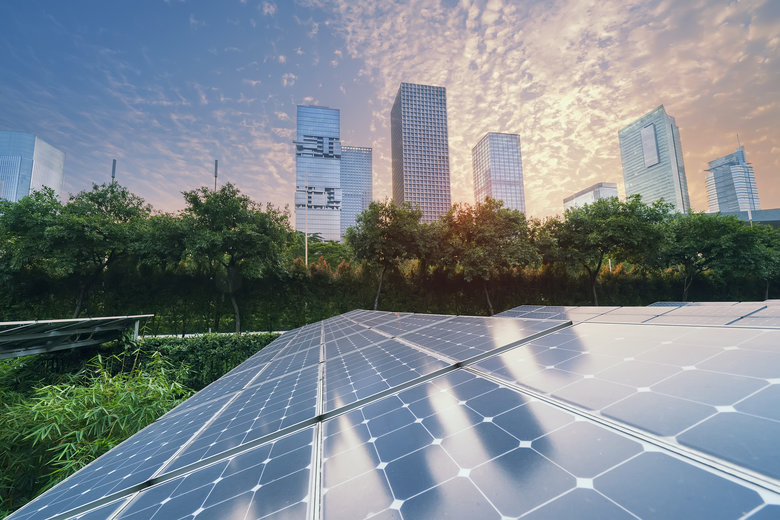
Two to three year fixed-rate contracts are the norm in Australia’s energy market and have been for as long as most of us can remember. But the energy market is changing, writes David Evans.
Coal-fired generators are retiring and being replaced by renewable energy. This shift in the energy mix is giving rise to new energy procurement models.

Corporate power purchase agreements (PPAs) are one of these alternatives. Under a PPA, an energy user agrees to buy electricity from a renewable project, typically a wind or solar farm, for a fixed-term and price. Apple, Google, food manufacturer Mars Australia and several Australian councils have turned to PPAs for lower costs and improved environmental outcomes.
In Australia, three types of PPA are common:
- Wholesale PPAs: These are direct contracts between an energy user or energy retailer and a single wind or solar generator. Typically, these are purely financial agreements and are independent of an electricity supply contract
- Retail-sleeved PPAs: In this scenario, the agreement is facilitated by the energy retailer, who enters the agreement with the renewable project and passes through a portion of the renewable generation and associated benefits to each customer under a retail electricity supply agreement
- On-site PPAs: On-site renewable assets can be built, owned and operated by a retailer or another party and the generation sold to the customer at a fixed price and term under a PPA
Looking to the City of Sydney’s retail-sleeved PPA, the agreement was designed to match the Council’s energy requirements with a mix of wind and solar projects, including its own rooftop solar system. These include Bomen Solar Farm in Wagga Wagga, Sapphire Wind Farm near Inverell and Shoalhaven Solar Farm, which is currently in development near Nowra.
PPAs like this come with inherent macro environmental benefits. They provide support to Australia’s growing pipeline of renewable projects, which in turn invests in regional economies and employment, and better integrates these projects into the grid. These are all crucial steps toward achieving a net-zero carbon future.
According to the Business Renewables Centre’s Australia’s State of the Corporate PPA Market 2019 report, there were around 40,000 MW of solar, wind and battery storage projects looking for buyers last year. With so many PPAs entering the market, and an even larger number of renewable projects looking to strike up deals, it would be easy to assume that setting up a PPA is a straightforward process.
Many buyers soon realise the process is complex. A PPA is more complex than an agreement for the supply of electricity and is generally for a much longer term. Some PPAs may not include the supply of electricity at all, such as standard wholesale PPAs that use purely financial instruments or PPAs that simply concern the purchase of Large-Scale Generation Certificates (LGCs). That’s why it’s crucial to have a clear understanding of what organisational goals there are – if any – that will drive the process.
If your goal is simply to lock in a lower price, the steps you take may vary greatly from an organisation looking to meet climate commitments.
For example, an organisation looking to meet climate or environmental targets will need to consider whether being powered by 100 percent renewable energy is central to meeting this target.
There are two steps to take when considering a 100 percent renewable PPA. The first step looks simply at how much renewable energy will be required to meet your organisation’s energy needs in full, including when energy is generated and consumed, and the project(s) it will come from. The second step is a separate agreement to purchase and surrender of LGCs or GreenPower to offset 100 per cent of your energy use.
You’ll also need to look forward and ask yourself how your organisation will manage the agreement once it’s in place and whether you have any plans for an on-site generation project, like rooftop solar. Unless you have an in-house energy management team, a retail-sleeved PPA is usually the most practical choice as it can be tailored to your specific needs and covers everything from the supply of electricity and the agreement with the renewable project(s) to LGCs.
Australia is entering one of its toughest climate and economic eras, and these are the thought processes and decisions that should form part of any organisation’s energy strategy.
As more renewable energy enters the system, my hope is that PPAs will become as commonplace as they are across Europe and North America, providing critical support to new renewable projects and driving Australia’s transition to a net-zero carbon future.
*David Evans is co-founder and Director of Melbourne-based energy retailer Flow Power.
Comment below to have your say on this story.
If you have a news story or tip-off, get in touch at editorial@governmentnews.com.au.
Sign up to the Government News newsletter
Most read
Scathing report finds little has changed at PwC
Qld council welcomes progress on massive battery system
‘Local’ procurement turns out not to be so local, committee hears
Another report finds local government falling down on cyber security
MoG changes see regions, investment return to NSW Premier’s Department